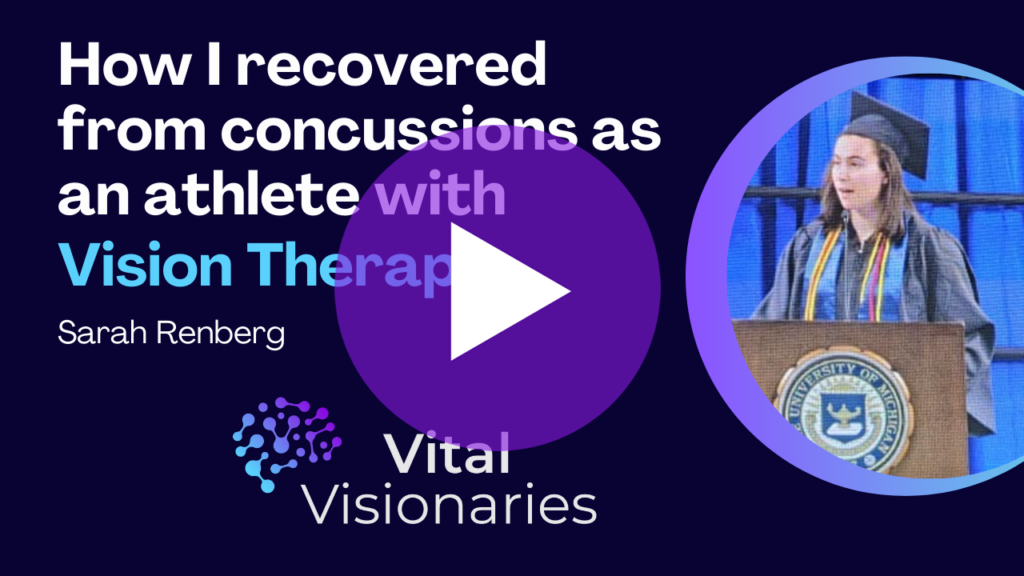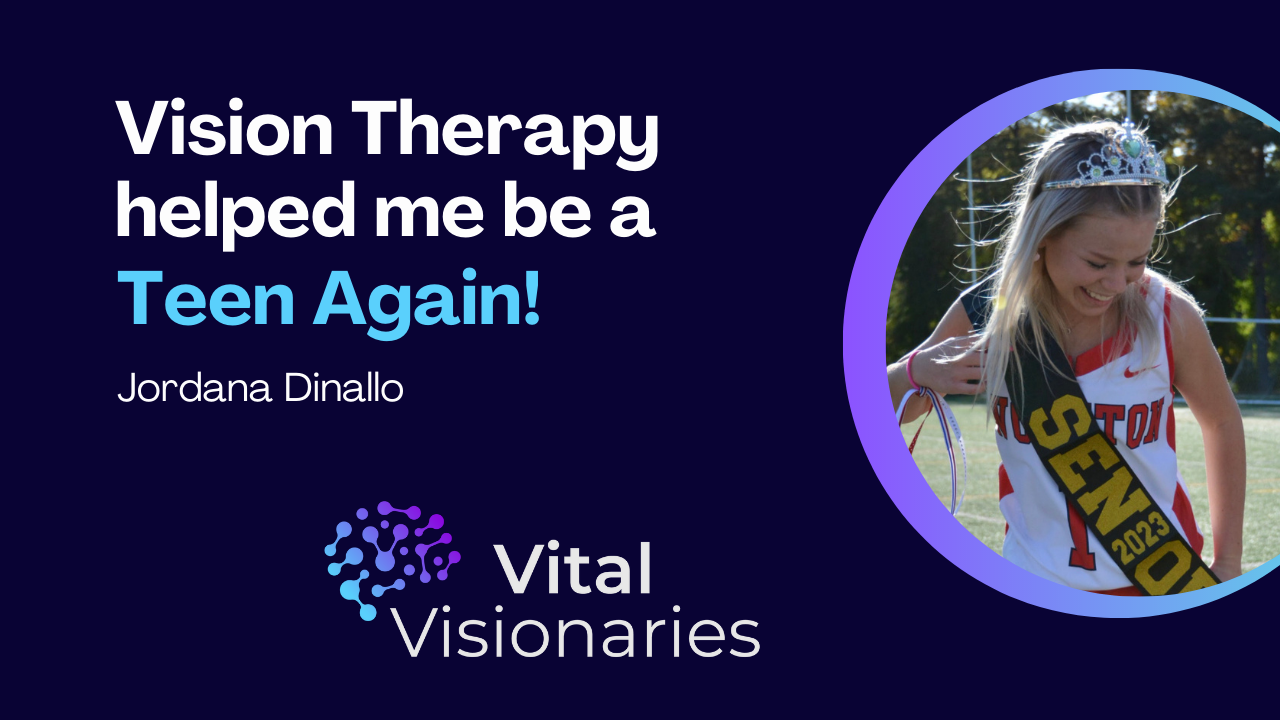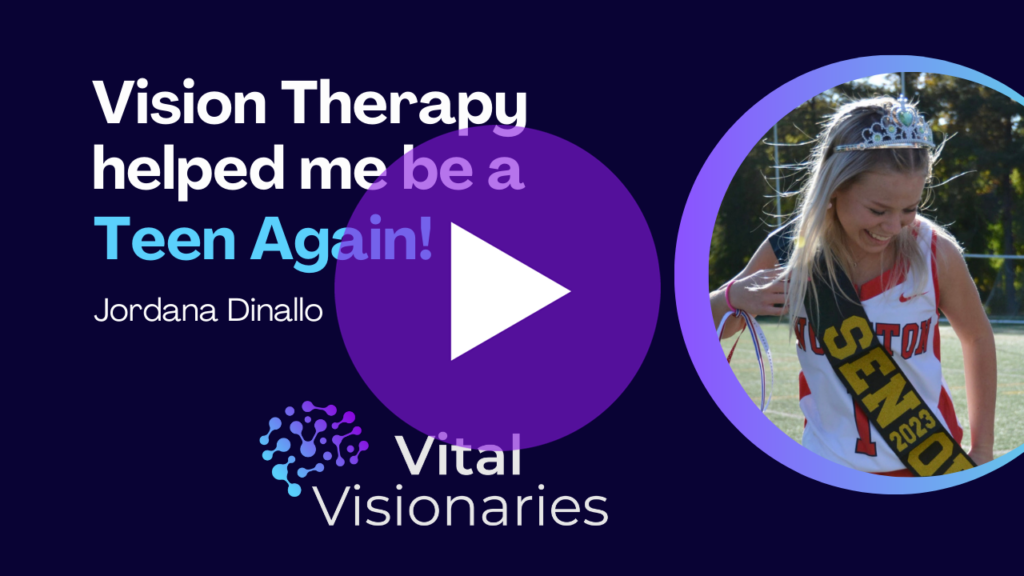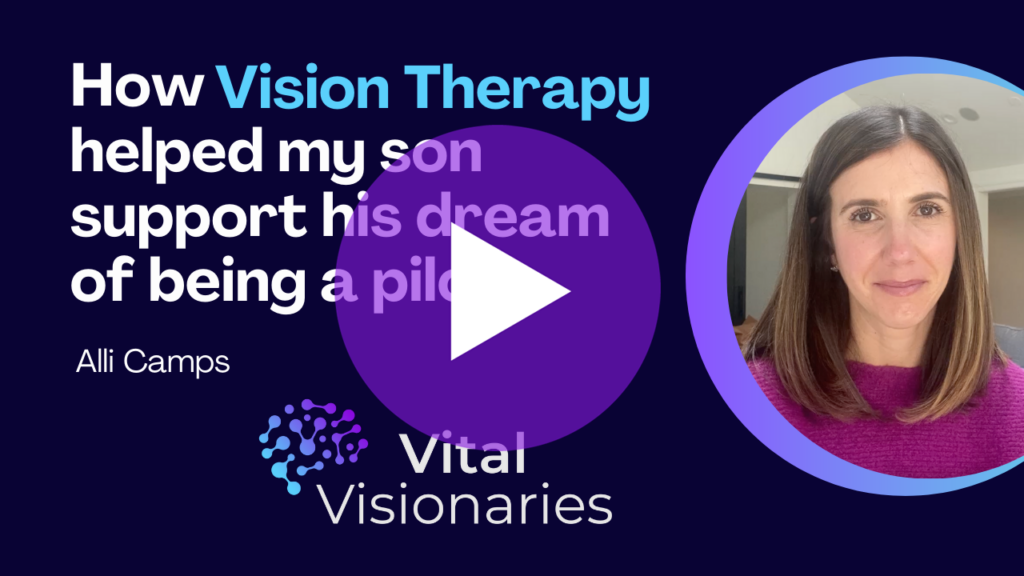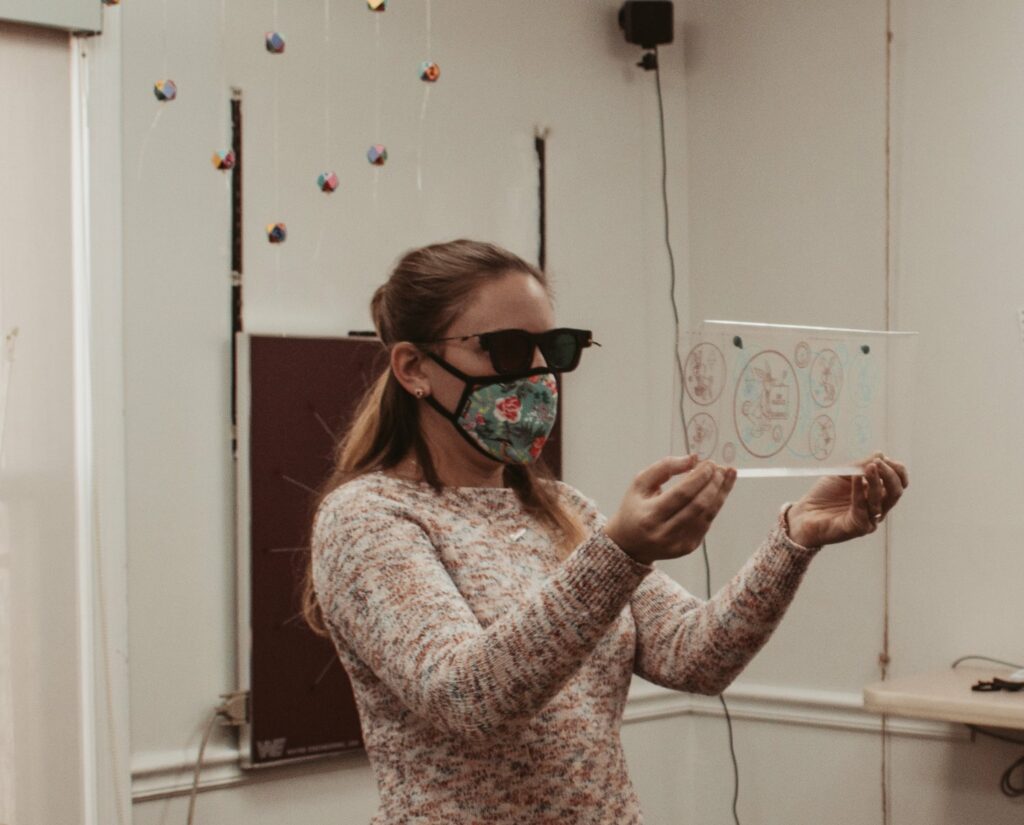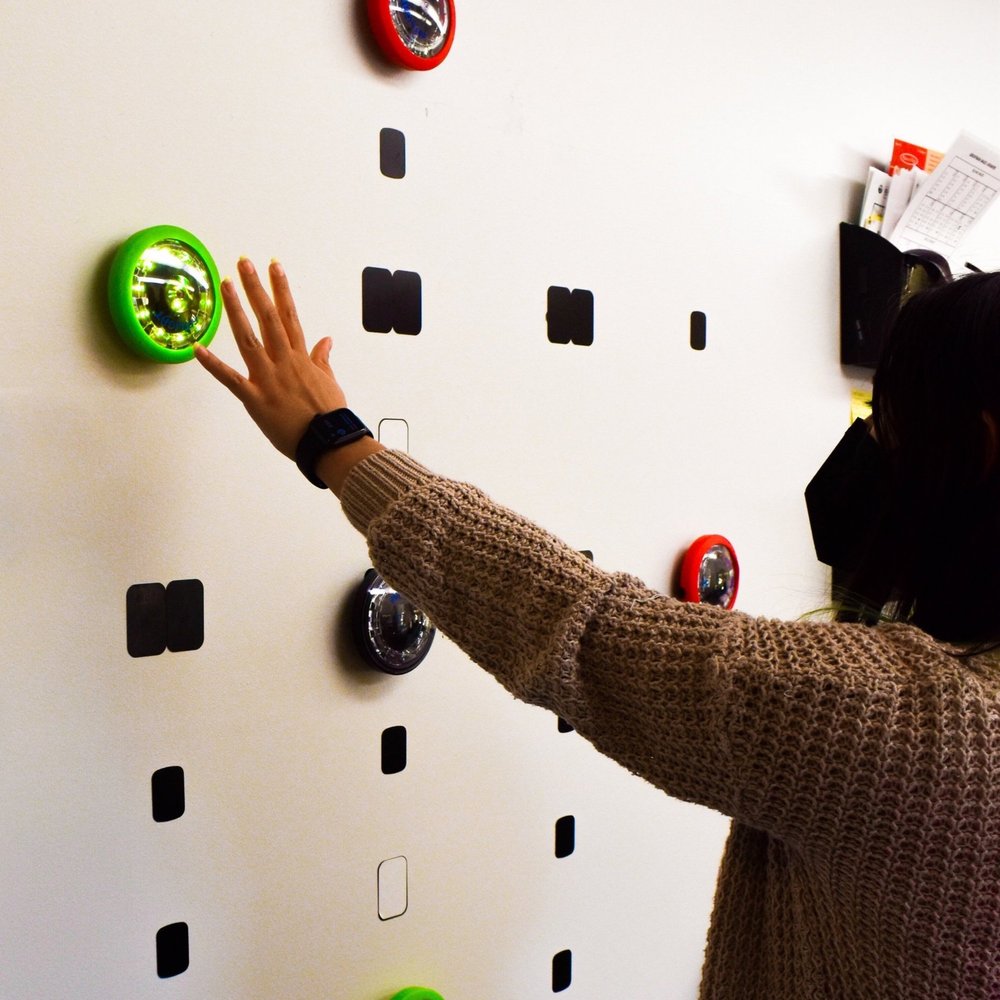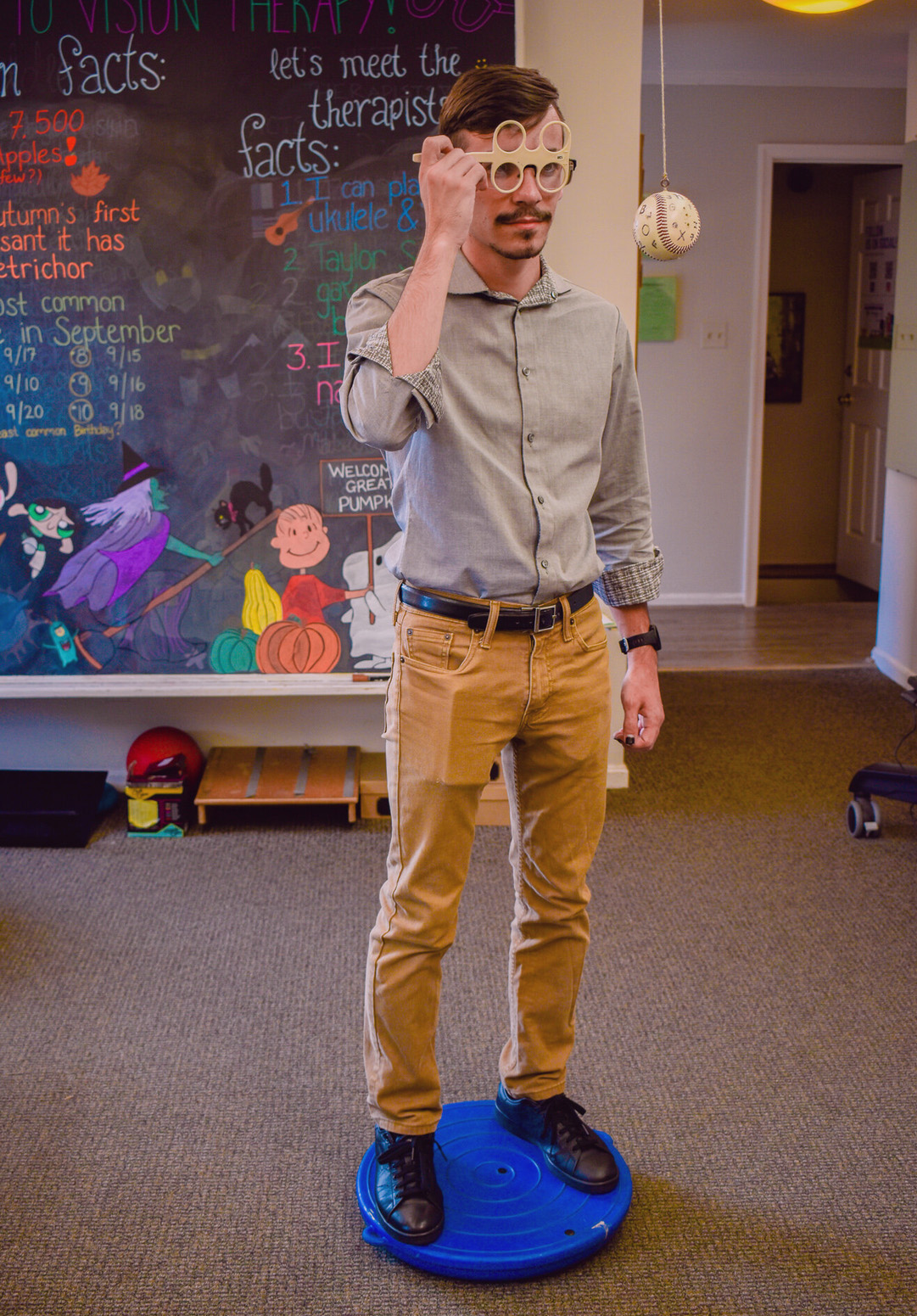Excessive Screen Time
We live in a digital world where screens and digital devices are anywhere that you turn. Whether this is your new normal with tech taking over the workplace, or for your children who are being introduced to screens and technology at earlier and earlier ages, many of us are faced with visual stress from computer screens where we may not have developed the visual skills and abilities necessary to support these demands.
Or in other words, many individuals aren’t visually ready to be staring at screens. And many are just accepting the visual symptoms that come with this, even though this does not have to be the case. It is our mission to help support our patients and establish mindful habits to ensure that bad habits don’t become embedded.


Screens present unique visual demands that often make the eyes and brain work harder, and much differently, than when engaged with 3-dimensional space. Viewing a digital screen presents diverse challenges in comparison to reading a printed page.
With screens, the contrast presented of letters to the background is often reduced, words and pictures can have less sharply defined borders, and glare, or sometimes even reflections can make the viewing environment challenging to interpret.
Individuals often adopt body positioning or viewing distances and angles that are not apparent for other sustained visual concentration tasks like book reading or writing.
Computer Vision Syndrome
Computer Vision Syndrome (CVS), also referred to as digital eye strain, is a cluster of eye and vision related problems that are as a result of prolonged computer, tablet, and cell phone use. Many of the symptoms associated with this syndrome are often influenced by poor lighting, the glare associated with digital screens, unhealthy viewing distances, or poor posture while seated. The level of discomfort usually increases with the amount of screen time, but symptoms can also arise with shorter exposure.
Uncorrected or previously unknown vision problems often exacerbate symptoms and the severity of Computer Vision Syndrome.
Even minor vision problems can majorly influence how an individual performs when engaged with a screen, and elicit symptoms. Often those who wear glasses or contact lenses may need a different prescription or setup that’s more suitable for the precise working distance of their screen. In these situations, many people may find they are adjusting their bodies or tilting or turning their heads in an effort take in the screen less uncomfortably. The unique eye focusing, eye teaming, and eye movement demands for screens taxes the visual system in ways that may force the brain to avoid the task or even adapt in unfavorable ways. Simply put, CVS symptoms arise when we don’t have the visual skills and abilities to meet the demands.
While some experience symptoms within moments of staring at a computer, and others not at all, those who spend 2 or more continuous hours per day at a screen are at the greatest risk for developing CVS.
This is categorized as a combination of ocular, visual, and musculoskeletal symptoms associated with extended near work on computer monitors. While handheld devices differ from computers – and laptops differ from desktops – in terms of viewing distance and position, usage patterns, screen size, and luminance, there is an increased risk of developing CVS with excessive use of any device with a screen.
It is estimated that about 70% of workplace computer users in the United States suffer from this syndrome.

Symptoms may include:
- Eye Pain
- Headaches
- Blurred Vision
- Dry Eyes
- Neck, Shoulder, and Upper Back Pain
- Light Sensitivity
- Double Vision
- Color Distortions
- After Image Awareness
Prolonged use of digital devices is also likely associated with decreased blink rates, tears not covering the front surface of the eye, and a brutal cycle of symptoms of Dry Eye Disease.
Fortunately, some visual symptoms may be temporary and diminish after stopping screen time engagement. But others persist even beyond stopping computer work such as blurred distance vision or focusing problems. Symptoms often can recur and even worsen with future digital screen usage.


Diagnosis
Computer Vision Syndrome or digital eyestrain can be most accurately diagnosed through a comprehensive eye examination with appropriate testing that asses the visual requirements for digital devices. This testing should include thorough patient history, visual acuity, refraction, and functional testing that explores how the eyes move together, work together, and focus in unison. Testing should emphasize the visual requirements for staring at screens at the particular working distance that’s utilized in your life.
Treatment
While the best option for treatment will always be avoiding or significantly reducing our screen use, that is not an option for many of us who use screens daily in our life.
This is where Vision Therapy & correct diagnosis comes in.
For those problems that are functional in nature and cannot be adequately corrected with lenses or any combination of these options, an individualized treatment program of Optometric Vision Therapy may be needed to specifically address and eliminate these problems.
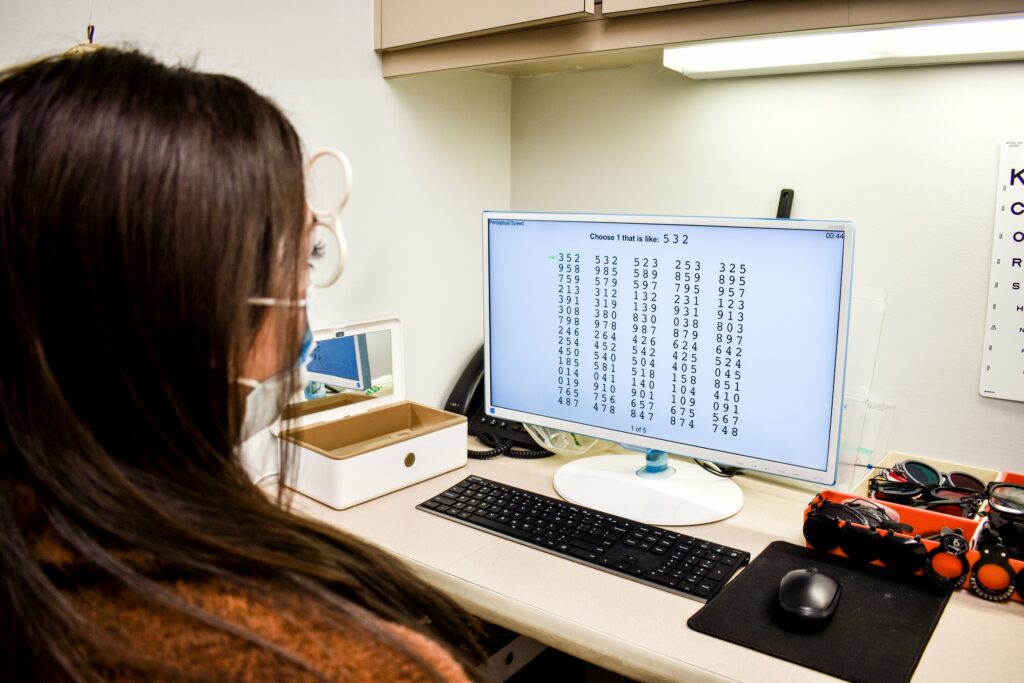
Vision therapy teaches the eyes and brain to work together more effectively and depending on the severity of the problems, can incorporate an office based program, home training program, or combination of the two. Careful analysis of the focusing system, tracking system, and eye teaming systems by an optometrist specially trained in visual development and rehabilitation can determine how good of a candidate someone is for Vision Therapy, and help design an individualized program to lead them to a place of clear, comfortable, and healthy vision.
Learn More About Computer Vision Syndrome (CVS)
Book An Evaluation
Contact us now to learn how you can book a vision evaluation and get started on your journey towards optimal vision.


